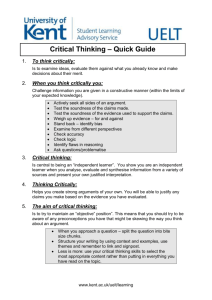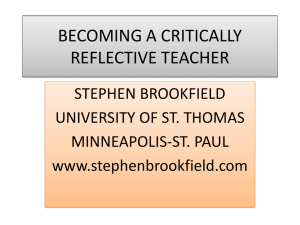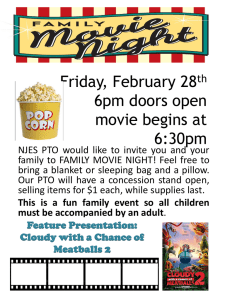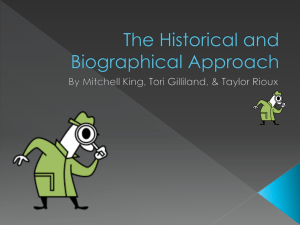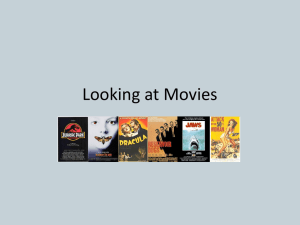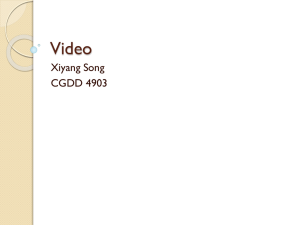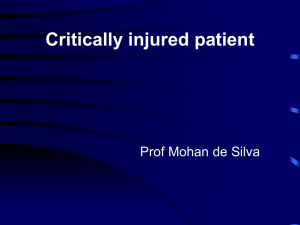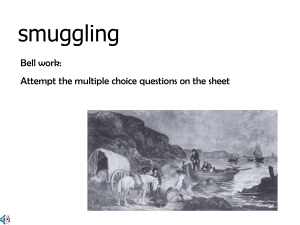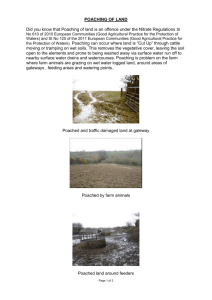UNDERSTANDING BY DEsign
advertisement
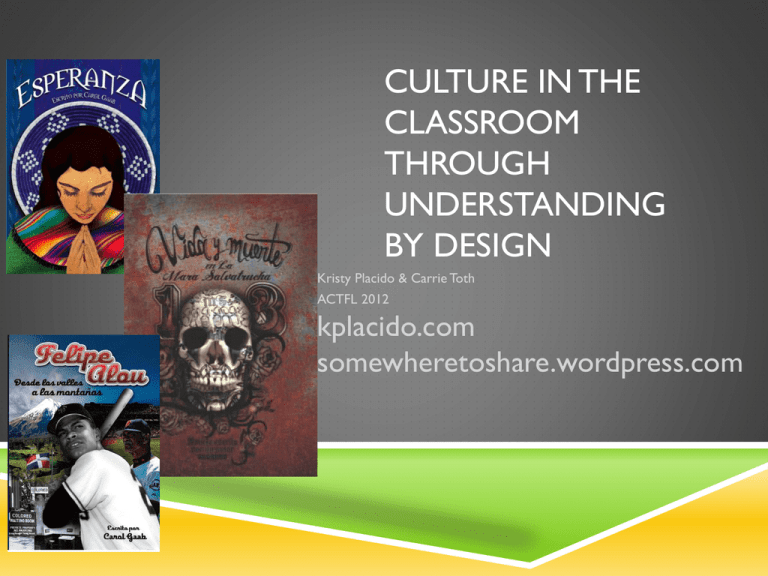
CULTURE IN THE CLASSROOM THROUGH UNDERSTANDING BY DESIGN Kristy Placido & Carrie Toth ACTFL 2012 kplacido.com somewheretoshare.wordpress.com JAY MCTIGHE AND GRANT WIGGINS: According to Wiggins and McTighe (1998), our classrooms need to focus on wholeness rather than teaching components in isolation and hoping that students can connect the dots when they need to use them in a real life situation (p. 48). STAGES OF UBD 1. Identify Desired Results What should students know, understand, and be able to do? What “enduring” understandings are desired? 2. Determine Acceptable Evidence How will we know if students have achieved the desired results and met the content standards? How will we know that students really understand the big ideas? What will we accept as evidence of proficiency? 3. Plan Learning Experiences and Instruction What will need to be taught and coached and how should it be taught in light of performance goals? What sequence of activity best suits the desired results? EXAMPLE ONE: A QUICKY UNIT… Unit designed around the TPRS Publishing novel “Robo en la noche.” WHATEVER YOUR UNIT, BEGIN IT WITH A HOOK! Hand students a drawing of an open suitcase. Tell them that they have just found out that they will be moving to Costa Rica with their parents and the only things that they can bring are what fit inside the suitcase. What would they take? What would they have to leave behind that they would really miss? HOOK OPTION 2: A VIDEO DESIRED OUTCOME Big idea: Students will use the target language in an increasingly complex manner to discuss the ideas of smuggling/poaching and of living outside of the United States. KNOWLEDGE (STUDENTS WILL KNOW) Terms related to bird poaching/smuggling: rope, nest, bird, take care of, feed, eggs Geography/Culture of Costa Rica: What are some natural features of the country? What is it like politically? What are some foods common to CR? What is MINAE? SKILLS (STUDENTS WILL BE ABLE TO) Give reasons why people might steal bird eggs. Accurately use new vocabulary in the target language to discuss and write about issues in animal poaching/smuggling. Think critically to find ways to help protect the environment in the rainforest. EVIDENCE Discussion of the novel will include critically thinking about the harm done by stealing bird eggs from their nests and/or selling poached animals. Discussion of the movie Rio will include critically thinking about similarities and differences between the life of “Mimi” the bird and Rio. Students will also compare the discovery and arrest of the smugglers in the movie and the novel. EXAMPLE TWO: FULL UNIT SPANISH 3 Unit designed around the novel “La hija del sastre” from TPRS Publishing. DESIRED OUTCOME Big idea: Students will use the target language in an increasingly complex manner to discuss the themes common to war as they relate to the US and Spanish speaking countries. STANDARDS ADDRESSED ACTFL Goal of Unit: CONNECTIONS: Standard 1.1: Students engage in conversations, provide and obtain information, express feelings and emotions, and exchange opinions Standard 1.2: Students understand and interpret written and spoken language on a variety of topics Standard 1.3: Students present information, concepts, and ideas to an audience of listeners or readers on a variety of topics. Standard 3.1: Students reinforce and further their knowledge of other disciplines through the foreign language Standard 3.2: Students acquire information and recognize the distinctive viewpoints that are only available through the foreign language and its cultures UNDERSTANDINGS Students will understand that depending on circumstances, all human beings are capable of abuses of human rights. Students will understand that the intentions and sources of all communication should be critically examined. Students will understand factors that lead to war. Students will understand that outside influences can impact the direction and outcome of conflicts/war. Students will know how to self-evaluate. Students will relate new material to their own lives. Students will identify key historical events in 20th century Spain. ESSENTIAL QUESTIONS What economic factors both at home and abroad contribute to war? How can the involvement of another country influence the direction and outcome of a war? How might social and economic factors contribute to war? In what ways can positions of power lead to abuses of human rights? How can we find the truth in print and media sources when there may be bias toward one side or the other? Is it possible that the truth may be somewhere between the two sides? What events of the 20th century led to the current parliamentary monarchy in Spain? How do the events of the pre through post-war era in Spain compare with the same time frame in the United States? What connections have I made through this unit and how has my understanding of myself and others grown as a result? KNOWLEDGE (STUDENTS WILL KNOW) Terms related to political viewpoints: socialism, fascism, left/right wing, conservative, moderate, liberal. Terms related to war: human rights, kill, die, shoot, injure, fair, unfair, fear Who are: Francisco Franco, Juan Carlos I, Alfonso XIII, Luis Carrero Blanco, ETA, Joan Miró, Pablo Picasso Where are Cataluña and País Vasco and how are these two autonomies central to the rebellion? How to identify bias in sources of information. SKILLS (STUDENTS WILL BE ABLE TO) Compare and contrast the Spanish Civil war with the US Civil war. Accurately use new vocabulary in the target language to discuss and write about complex social topics. Think critically to identify bias in resources used to study historical topics. ASSESSMENT EVIDENCE Students will reflect critically in a journal beginning with the third episode of the movie. They will use target vocabulary to share their feelings about the events seen in the weekly segment. Quiz on historical timeline Reflections on events and time periods from different perspectives. Interpretation of the work “Guernica” by Pablo Picasso- explain the significance of at least 5 objects in the painting. Interpretation of propaganda- posters circulated by Fascists and Republicans. Historical Graphic Novel- Students will tell the story of 19th century Spain through a series of pictures. Discussion of Pan’s Labyrinth will include searching for bias toward one side or the other and discussion of where in the period of the Second Republic the movie took place. Discussion of the movie Butterfly will include critically thinking about which events in the movie represent political statements. Teacher will model this for 3 episodes, Students will hunt for political themes in the last 4 episodes. ART GALLERY PROJECT (SHAMELESS PLUG) TPRS PUBLISHING NOVELS ABOUT US/CONTACT US ctoth@clinton.k12.il.us placidok@gmail.com kplacido.com somewheretoshare.wordpress.com Follow us on Twitter @senoraCMT @placido @CarolGaab @tprspublishing ACTFL Booth #1213
